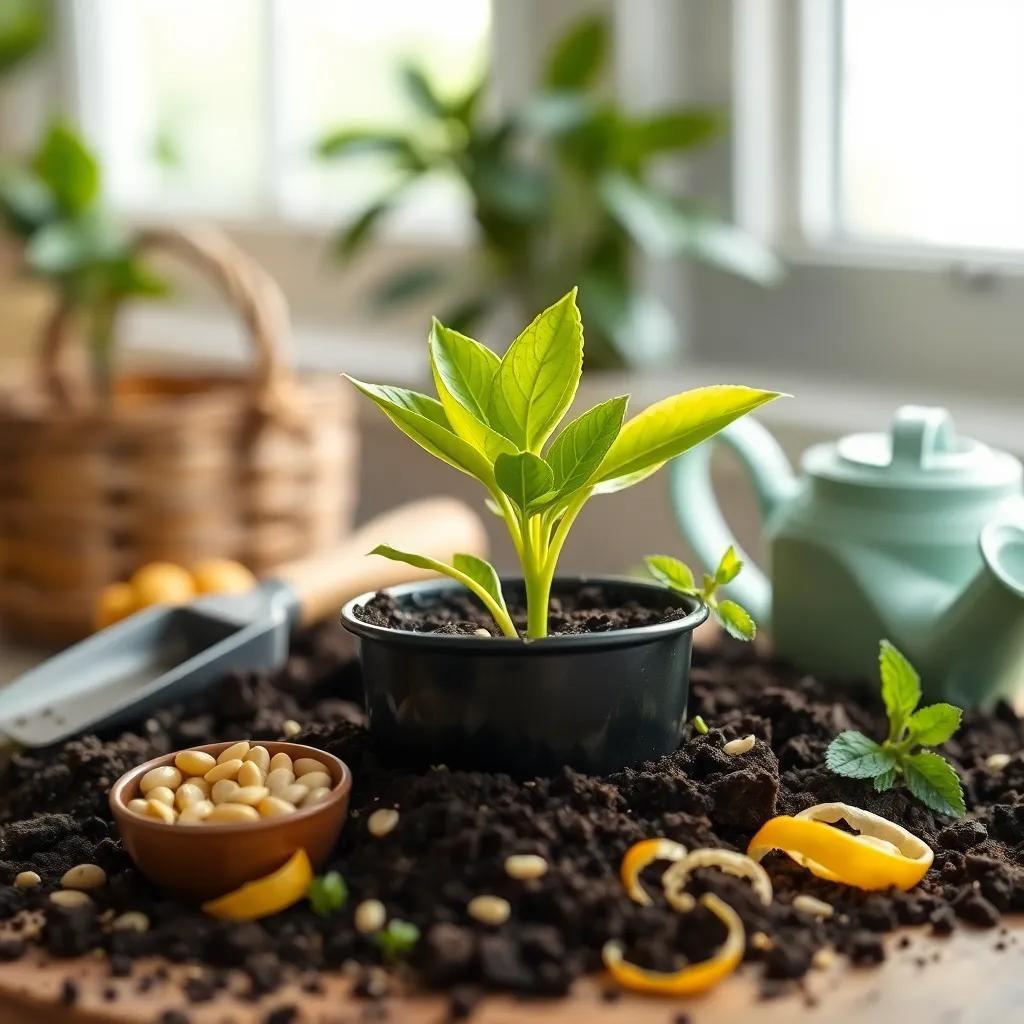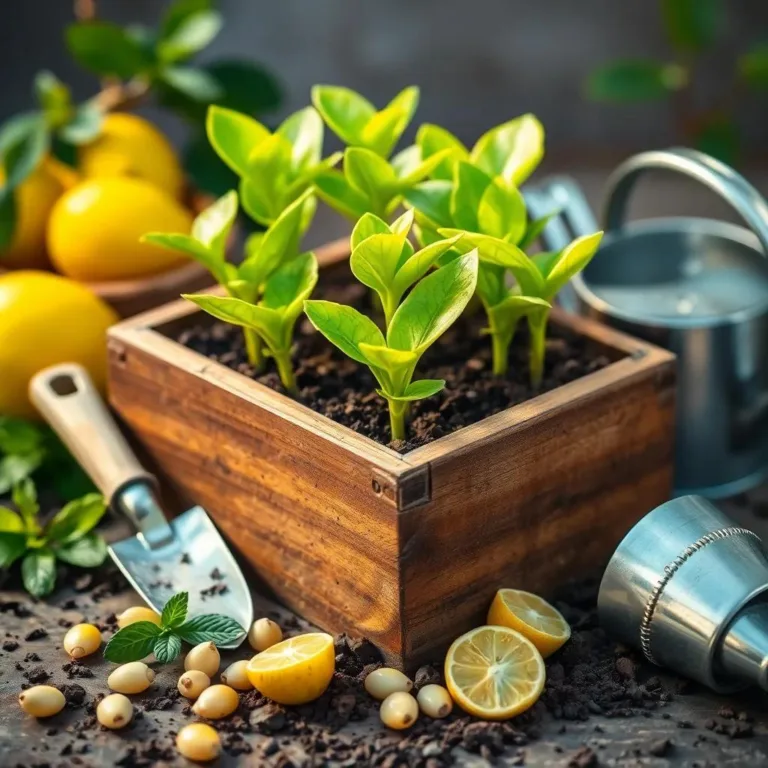Growing lemon trees from seeds is not just a gardening project; it’s a delightful adventure! I can’t tell you how exciting it is to watch those tiny seeds turn into fruitful trees right in your backyard. Are you ready to learn how to give your lemon seeds the best chance to sprout and thrive? Let’s dig in!
Factors Affecting Lemon Seed Germination Success
When I decided to grow lemon trees from seeds, I quickly learned that several factors can affect the germination process. Understanding these factors is key to successful seedling growth. So, let’s take a closer look at what can influence your lemon seeds’ chances of sprouting!
- Seed Quality: If you want healthy seedlings, it all starts with good seeds! Use seeds from ripe, organic lemons. Fresh seeds are more likely to germinate than older, dried ones.
- Temperature: Lemon seeds need warmth to grow, so keep them in a cozy environment. An ideal temperature range is between 70°F to 80°F (21°C to 27°C). If your home is cooler, consider placing them in a sunny window or using a seedling heat mat!
- Moisture Levels: Lemon seeds love moisture, but they don’t want to swim! Keep the soil consistently moist—think of it like a damp sponge, not a soggy mess. Overwatering can lead to rot, which is a definite no-go for your seeds.
- Soil Quality: A well-draining potting mix is a must for happy seeds! They like a slightly acidic environment, rich in organic matter. If your soil doesn’t drain well, consider mixing in some sand or perlite to create the perfect home for your seeds.
- Light Exposure: While lemon seeds need warmth, they also need light! Once the seeds sprout, they thrive in bright, indirect sunlight. Too little light can stunt their growth, while too much direct sunlight can scorch those delicate leaves.
By paying attention to these factors, you can greatly improve the odds that your lemon seeds will germinate and grow into healthy, flourishing plants! Isn’t that exciting?
Ideal Soil Conditions for Lemon Seeds
Now that we know what affects germination, let’s talk about where to plant those precious lemon seeds! The right soil conditions can make all the difference in helping your seeds sprout and thrive. Here are some key points to consider:
- Well-Draining Soil: Lemon seeds are not fans of standing water. To keep them happy, use a well-draining potting mix. This allows excess moisture to escape, keeping the roots healthy and happy!
- Soil pH: Aim for a slightly acidic soil pH, ideally between 5.5 to 6.5. You can test your soil pH with a simple testing kit from your local garden center. If the pH is too high, you can add organic materials like peat moss to lower it.
- Organic Matter: Adding organic matter, such as compost, not only improves drainage but also provides essential nutrients for your seedlings. A little bit of compost can go a long way in keeping your lemon trees healthy!
- Soil Texture: A sandy loam texture is perfect for lemon seeds. It holds some moisture while still allowing for good drainage. If your soil is too heavy, try mixing in some sand or vermiculite.
- Container Size: If you’re starting your lemon seeds indoors, don’t forget about the pot size! Choose pots that are at least 4 inches deep to give the roots enough room to spread out. Trust me, your seedlings will thank you later!
In short, creating the right soil conditions is a critical step in your lemon-growing adventure! With great soil, your seeds will have a nurturing environment to sprout and develop into beautiful lemon trees. Happy planting!

Best Practices for Watering Lemon Seedlings
Once your lemon seeds have sprouted, watering becomes one of the most important tasks in caring for your seedlings. I remember when I first started gardening; I had to learn the balance between giving enough water and not drowning my plants! Here are some best practices to help your lemon seedlings thrive:
- Regular Watering Schedule: Lemon seedlings prefer consistent moisture. Water them every few days but keep an eye on the soil moisture. Stick your finger about an inch into the soil—if it feels dry, it’s time to water!
- Use Room Temperature Water: Cold water can shock your seedlings, so I always use water at room temperature. This is like giving them a cozy drink after a long day!
- Watering Method: Use a watering can with a narrow spout or a spray bottle to gently water the seedlings. Try to avoid pouring water directly on the leaves, as this can lead to mold formation. Aim for the soil instead!
- Avoid Overwatering: While seedlings love moisture, they hate sitting in water. Overwatering can cause root rot, which is a real nightmare! Make sure the pot has good drainage to prevent water from pooling at the bottom.
- Signs of Underwatering: Watch for signs that your seedlings need a drink. If the leaves start drooping or turning yellow, it might be time to water!
By following these watering tips, you can keep your lemon seedlings happy and healthy. I’ve learned that a little attention goes a long way in growing strong plants!
Sunlight Requirements for Healthy Lemon Trees
Lemon trees are sun lovers, and they crave light just like I crave a sunny beach day! When it comes to sunlight, here’s how to provide the right amount for your seedlings:
- Sun Exposure: Lemon seedlings need 6 to 8 hours of direct sunlight each day. If you’re growing them indoors, place them near a south-facing window where they can soak up the sun’s rays. Trust me, they’ll dance with joy!
- Light Quality: If natural light is lacking, you can use grow lights. These mimic sunlight and can help your seedlings thrive. Adjust the light height as the seedlings grow, keeping it close but not too close to avoid scorching the leaves.
- Monitor for Signs of Too Much Sun: While your seedlings love the sun, too much of a good thing can be harmful! If you notice leaf burn or fading colors, it’s time to provide some shade. A sheer curtain can help filter the light without blocking it completely.
- Seasonal Changes: Seasonal changes can affect light availability. During the winter months, you might need to adjust the placement of your seedlings to maximize their sunlight exposure. Don’t forget that lemon trees love warmth!
By giving your lemon seedlings the right amount of sunlight, you can help them grow strong and ready to produce delicious fruit in the future. A little sunshine can work wonders!
Common Pests and Diseases in Lemon Seedlings
Like all plants, lemon seedlings can face a few pesky challenges as they grow. But don’t worry! With some knowledge and vigilance, you can protect your little green friends. Here are some common pests and diseases to watch out for:
- Aphids: These tiny insects can be troublesome. They suck the sap from leaves, which can cause yellowing and curling. If you spot them, a gentle spray of water can knock them off. You can also use insecticidal soap for serious cases.
- Mealybugs: These cotton-like pests love to hide in the leaf joints. They can cause stunted growth and lead to other problems. Keep an eye out for them and use a cotton swab dipped in alcohol to remove them.
- Scale Insects: These little critters attach to the stems and leaves, forming hard shells and sucking nutrients. If you notice these guys, act quickly! Use horticultural oil or soapy water to treat the plants.
- Fungal Diseases: Fungal infections, like root rot or powdery mildew, can occur if the seedlings are overwatered or lack airflow. To prevent this, ensure proper drainage and avoid overcrowding. If you see any signs, treat them with appropriate fungicides.
- Regular Inspections: Make it a habit to check your seedlings weekly. Look for any unusual spots, discoloration, or bugs. The sooner you catch a problem, the better!
With a little vigilance and care, you can help your lemon seedlings dodge these pests and diseases, allowing them to grow into healthy trees. Happy gardening!

